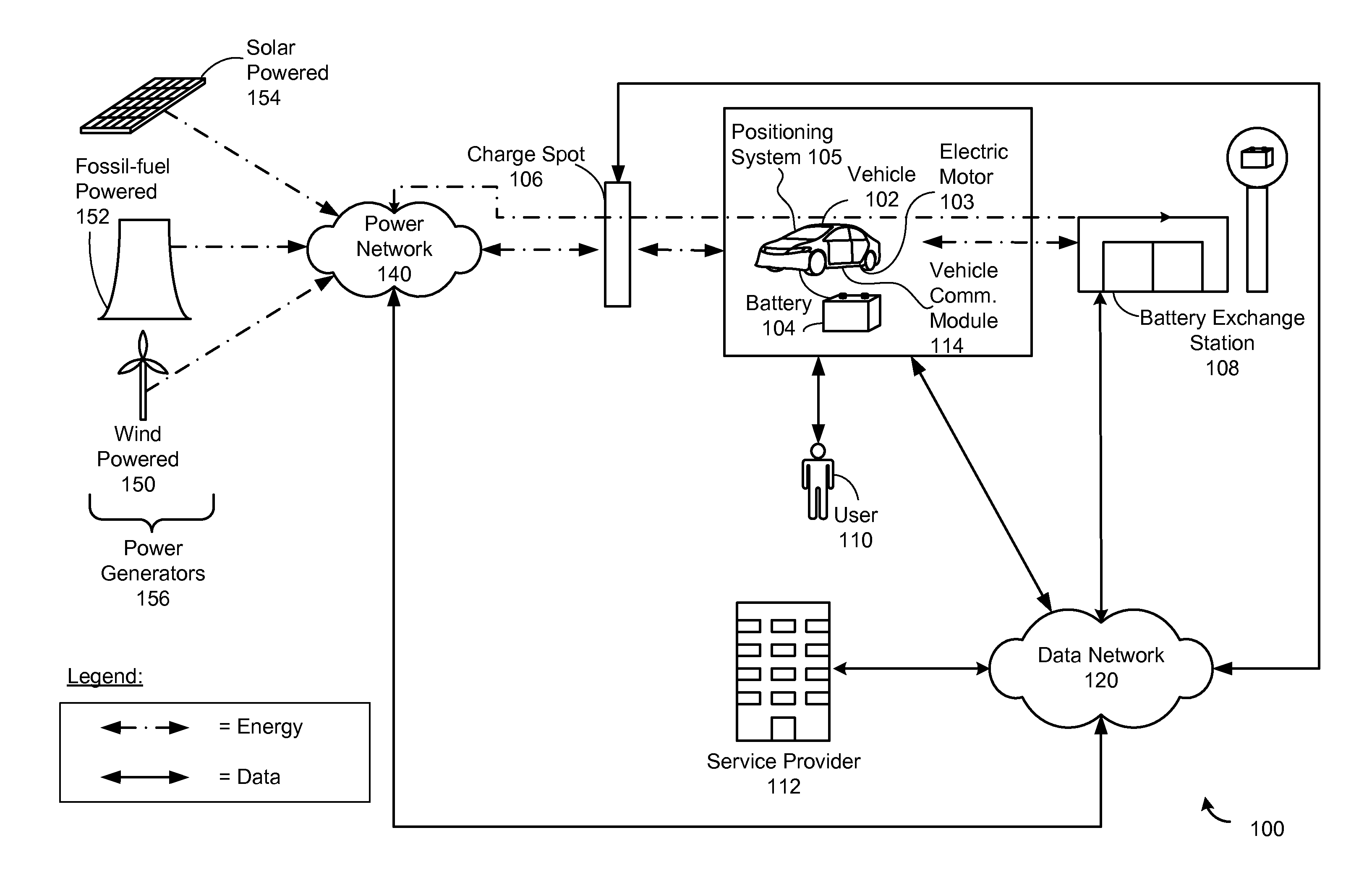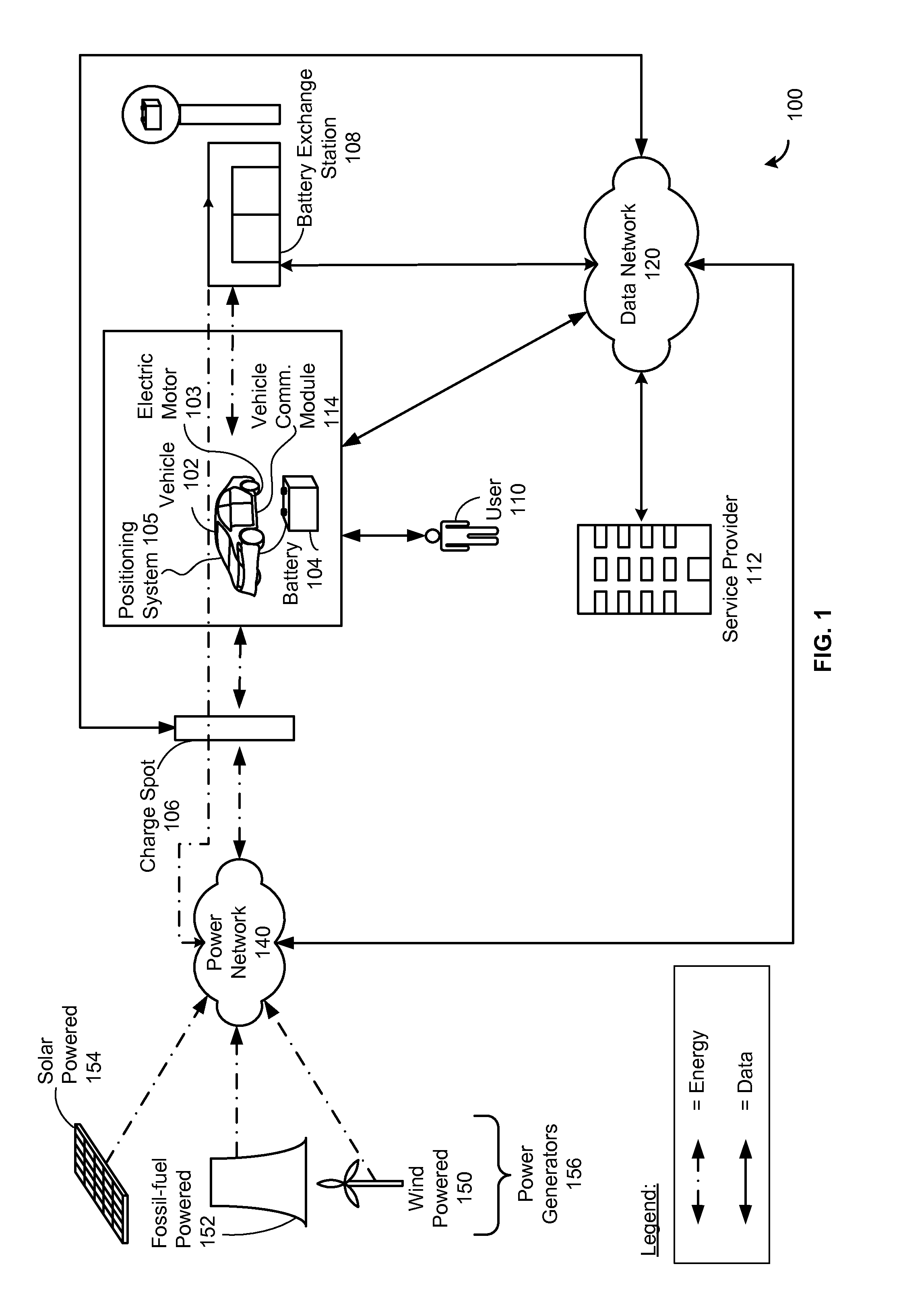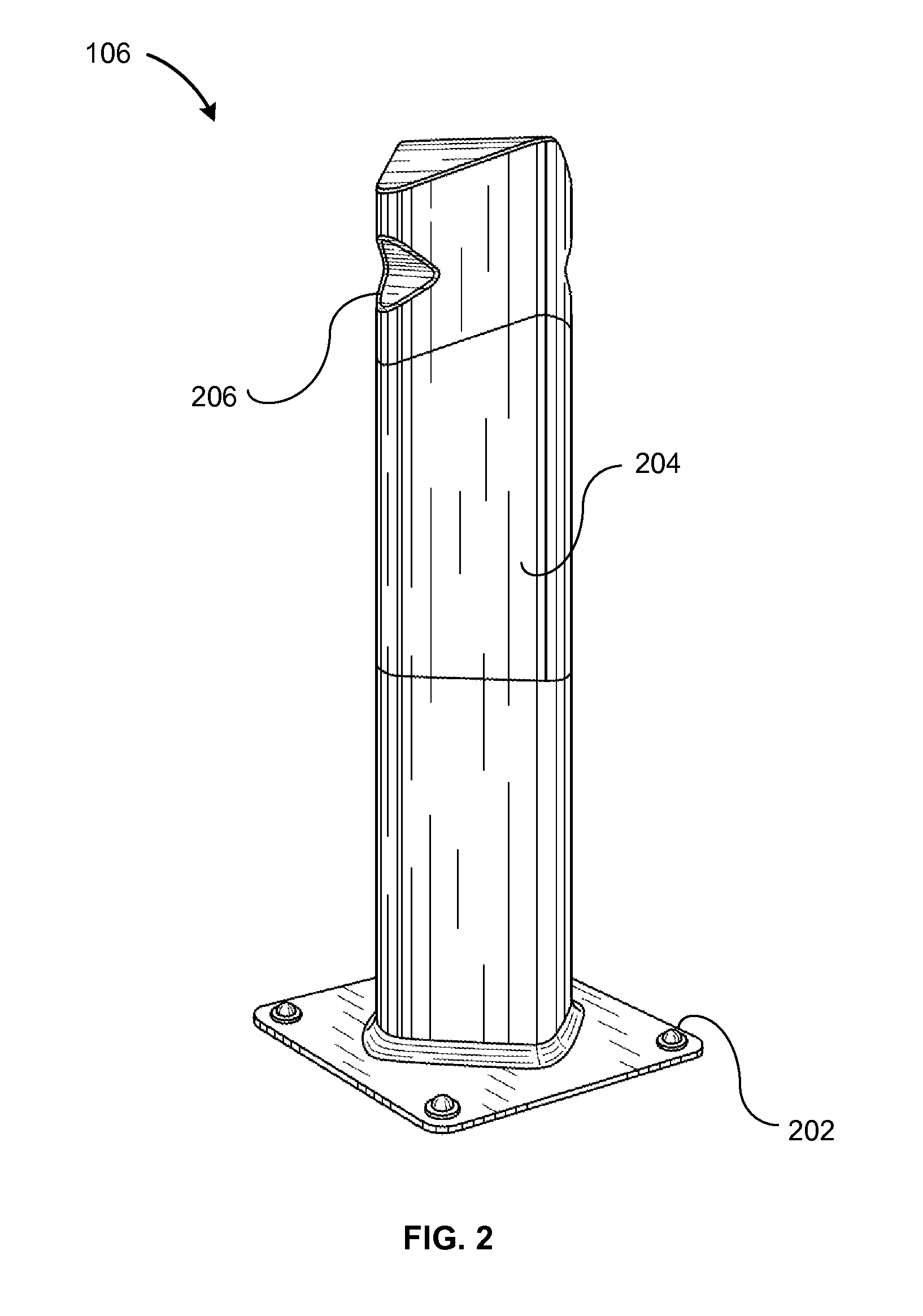Staged deployment for electrical charge spots
a technology of electrical charging and staged deployment, which is applied in the direction of charging stations, electric vehicles, electrical apparatus, etc., can solve the problems of affecting the service life of electric vehicles, so as to reduce the time of infrastructure disturbance, facilitate the mate, and reduce the effect of manufacturing costs
- Summary
- Abstract
- Description
- Claims
- Application Information
AI Technical Summary
Benefits of technology
Problems solved by technology
Method used
Image
Examples
Embodiment Construction
[0034]Reference will now be made in detail to embodiments, examples of which are illustrated in the accompanying drawings. In the following detailed description, numerous specific details are set forth in order to provide a thorough understanding of the present invention. However, it will be apparent to one of ordinary skill in the art that the present invention may be practiced without these specific details. In other instances, well-known methods, procedures, components, circuits, and networks have not been described in detail so as not to unnecessarily obscure aspects of the embodiments.
[0035]FIG. 1 illustrates an electric vehicle network 100, according to some embodiments. The electric vehicle network 100 includes a vehicle 102 and a battery 104. In some embodiments, the battery 104 includes any device capable of storing electric energy such as batteries (e.g., lithium ion batteries, lead-acid batteries, nickel-metal hydride batteries, etc.), capacitors, reaction cells (e.g., Zn...
PUM
 Login to View More
Login to View More Abstract
Description
Claims
Application Information
 Login to View More
Login to View More - R&D
- Intellectual Property
- Life Sciences
- Materials
- Tech Scout
- Unparalleled Data Quality
- Higher Quality Content
- 60% Fewer Hallucinations
Browse by: Latest US Patents, China's latest patents, Technical Efficacy Thesaurus, Application Domain, Technology Topic, Popular Technical Reports.
© 2025 PatSnap. All rights reserved.Legal|Privacy policy|Modern Slavery Act Transparency Statement|Sitemap|About US| Contact US: help@patsnap.com



